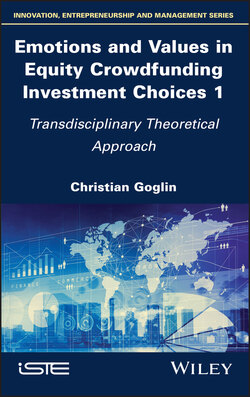Читать книгу Emotions and Values in Equity Crowdfunding Investment Choices 1 - Christian Goglin - Страница 11
Expected contributions
ОглавлениеThe issue of this book is first of all theoretical: this research aims to contribute to the emerging movement of ECF research that advocates a project choice based on the affect and not exclusively on the cognitive. The proposed theory of affective matching and its implementation by an individualized model makes, on the one hand, the prediction of Mangot (2013) – for whom “behavioral finance should not, in the near future, be spared an approach aimed at personalizing behaviors” – a reality and responds, on the other hand, to the call of Pare and Rédis (2011) for the “integration of concepts, and even methods from other disciplinary fields” in order to go beyond the “hypotheses of traditional finance, which are, as has been shown, unsuitable for the new company”.
The theoretical questions to which this book will try to provide some answers are as follows:
– Do values and emotional reactions determine the choice of projects in ECF?
– What are the relative influences of these two variables?
– What is the link between values and affective reactions?
– What is the history of affective reactions?
– In the absence of social interactions, does the affective dimension dominate over the cognitive dimension of choice?
– Can an explanatory and predictive model of individual choice be established a priori based on knowledge of investor preferences?
– Is such a model meant to be normative?
– What is the investor’s rationale?
Beyond the expected theoretical output, this book aims to provide the practitioners of ECF – first and foremost, investors – with a better understanding of their choices and the judgmental biases or heuristics to which they may be unconsciously subjected. The Autorité des marchés financiers (AMF), the French organization whose mission is to protect retail investors, will be able to use these results to back up the warnings given to investors.
Fundraising entrepreneurs will be able to usefully draw conclusions about the factors that attract investors, as this shareholder community is sought after for reasons of cognitive input that go beyond financial input. Other applications of the affective matching model, of an industrial nature, are possible and will be discussed in the conclusion.
